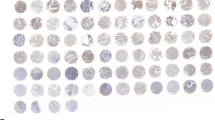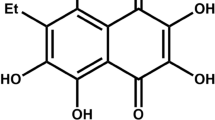Abstract
S100A8 and S100A9 (S100A8/A9) are low-molecular weight members of the S100 family of calcium-binding proteins. Recent studies have reported S100A8/A9 promote tumorigenesis. We have previously reported that S100A8/A9 is mostly expressed in stromal cells and inflammatory cells between gastric tumor cells. However, the role of environmental S100A8/A9 in gastric cancer has not been defined. We observed in the present study the effect of S100A8/A9 on migration and invasion of gastric cancer cells. S100A8/ A9 treatment increased migration and invasionat lower concentrations that did not affect cell proliferation and cell viability. S100A8/A9 caused activation of p38 mitogenactivated protein kinase (MAPK) and nuclear factor-κB (NF-κB). The phosphorylation of p38 MAPK was not affected by the NF-κB inhibitor Bay whereas activation of NF-κB was blocked by p38 MAPK inhibitor SB203580, indicating that S100A8/A9-induced NF-κB activation is mediated by phosphorylation of p38 MAPK. S100A8/A9-induced cell migration and invasion was inhibited by SB203580 and Bay, suggesting that activation of p38 MAPK and NF-κB is involved in the S100A8/A9 induced cell migration and invasion. S100A8/A9 caused an increase in matrix metalloproteinase 2 (MMP2) and MMP12 expression, which were inhibited by SB203580 and Bay. S100A8/A9-induced cell migration and invasion was inhibited by MMP2 siRNA and MMP12 siRNA, indicating that MMP2 and MMP12 is related to the S100A8/A9 induced cell migration and invasion. Taken together, these results suggest that S100A8/A9 promotes cell migration and invasion through p38 MAPKdependent NF-κB activation leading to an increase of MMP2 and MMP12 in gastric cancer.
Similar content being viewed by others
References
Aggarwal, B.B. (2004). Nuclear factor-kappaB: the enemy within. Cancer Cell 6, 203–208.
Ang, C.W., Nedijadi, T.A., Sheikh, A.M., Tweedle, E., Tonack, S., Honap, S.E., Jenkins, R., Park, B.K., Schwarte-Waldhoff, I., Khattak, I., et al. (2010). Smad4 loss is associated with fewer S100A8-positive monocytes in colorectal tumors and attenuated response to S100A8 in colorectal and pancreatic cancer cells. Carcinogenesis 31, 1541–1551.
Choi, J.H., Shin, N.R., Moon, H.J., Kwon, C.H., Kim, G.H., Song, G.A., Jeon, T.Y., Kim, D.H., and Park, D.Y. (2012). Identification of S100A8 and S100A9 as negative regulators for lymph node metastasis of gastric adenocarcinoma. Histol. Histopathol. 27, 1439–1448.
Dong, W., Li, H., Zhang, Y., Yang, H., Guo, M., Li, L., and Liu, T. (2011). Matrix metalloproteinase 2 promotes cell growth and invasion in colorectal cancer. Acta Biochim. Biophys. Sin. 43, 840–848.
Egeblad, M., and Werb, Z. (2002). New functions for the matrix metalloproteinases in cancer progression. Nat. Rev. Cancer 2, 161–174.
Foell, D., Wittkowski, H., Vogl, T., and Roth, J. (2007). S100 proteins expressed in phagocytes: a novel group of damage-associated molecular pattern molecules. J. Leukoc. Biol. 81, 28–37.
Gebhardt, C., Nemeth, J., Angel, P., and Hess, J. (2006). S100A8 and S100A9 in inflammation and cancer. Biochem. Pharmacol. 72, 1622–1631.
Gebhardt, C., Riehl, A., Durchdewald, M., Nemeth, J., Furstenberger, G., Muller-Decker, K., Enk, A., Arnold, B., Bierhaus, A., Nawroth, P.P., et al. (2008). RAGE signaling sustains inflammation and promotes tumor development. J. Exp. Med. 205, 275–285.
Ghavami, S., Kerkhoff, C., Los, M., Hashemi, M., Sorg, C., and Karami-Tehrani, F. (2004). Mechanism of apoptosis induced by S100A8/A9 in colon cancer cell lines: the role of ROS and the effect of metal ions. J. Leukoc. Biol. 76, 169–175.
Ghavami, S., Kerkhoff, C., Chazin, W.J., Kadkhoda, K., Xiao, W., Zuse, A., Hashemi, M., Eshraghi, M., Schulze-Osthoff, K., Klonisch, T., et al. (2008a). S100A8/9 induces cell death via a novel, RAGE-independent pathway that involves selective release of Smac/DIABLO and Omi/HtrA2. Biochim. Biophys. Acta. 1783, 297–311.
Ghavami, S., Rashedi, I., Dattilo, B.M., Eshraghi, M., Chazin, W.J., Hashemi, M., Wesselborg, S., Kerkhoff, C., and Los, M. (2008b). S100A8/A9 at low concentration promotes tumor cell growth via RAGE ligation and MAP kinase-dependent pathway. J. Leukocyte Biol. 83, 1484–1492.
Ghavami, S., Chitayat, S., Hashemi, M., Eshraghi, M., Chazin, W.J., Halayko, A.J., and Kerkhoff, C. (2009). S100A8/A9: a Janusfaced molecule in cancer therapy and tumorgenesis. Eur. J. Pharmacol. 625, 73–83.
Hermani, A., De Servi, B., Medunganin, S., Tessier, P.A., and Mayer, D. (2006). S100A8 and S100A9 activate MAP kinase and NF-kappaB signaling pathways and trigger translocation of RAGE in human prostate cancer cells. Exp. Cell. Res. 312, 184–197.
Hiratsuka, S., Watanabe, A., Aburantani, H., and Maru, Y. (2006). Tumour-mediated upregulation of chemoattractants and recruitment of myeloid cells predetermines lung metastasis. Nat. Cell Biol. 8, 1369–1375.
Hiratsuka, S., Watanabe, A., Sakurai, Y., Akashi-Takamura, S., Ishibashi, S., Miyake K., Shibuya, M., Akira, S., Aburatani, H., and Maru, Y. (2008). The S100A8-serum amyloid A3-TLR4 paracrine cascade establishes a pre-metastatic phase. Nat. Cell Biol. 10, 1349–1355.
Hofmann, H.S., Hansen, G., Richter, G., Taege, C., Simm, A., Silber, R.E., and Burdach, S. (2005). Matrixproteinase-12 expression correlates with local recurrence and metastatic desease in non-small cell lung cancer patients. Clin. Cancer Res. 11, 1086–1092.
Ichikawa, M., Williams, R., Wang, L., Vogl, T., and Srikrichna, G. (2011). S100A8/A9 acrivate key genes and pathways in colon tumor progression. Mol. Cancer Res. 9, 133–148.
Joyce, J.A., and Pollard, J.W. (2009). Microenvironmental regulation of metastasis. Nat. Rev. Cancer 9, 239–252.
Kerkela, E., Ala-aho, R., Klemi, P., Grenman, S., Shapiro, S.D., Kahari, V.M., and Saarialho-Kere, U. (2002). Metalloelastease (MMP-12) expression by tumour squamous cell carcinoma of the vulva correlates with invasiveness, while that by macrophages predicts better outcome. J. Pathol. 198, 258–269.
Li, J., Lau, G.K., Chen, L., Dong, S.S., Lan, H.Y., Huang, X.R., Li, Y., Luk, J.M., Yuan, Y.F., and Guan, X.Y. (2011). Interlukin 17A promotes hepatocellular carcinoma metastasis via NF-kB induced matrix metalloproteinases 2 and 9 expression. PLoS One 6, e21816.
Moon, A., Yong, H.Y., Song, J.I., Cukovic, D., Salagrama, S., Kaplan, D., Putt, D., Kim, H., Dombkowski, A., and Kim, H.R. (2008). Global gene expression profiling unveils S100A8/A9 as candidate markers in H-ras-mediated human breast epithelial cell invasion. Mol. Cancer Res. 6, 1544–1553.
Nacken, W., and Kerkhoff, C. (2007). The hetero-oligomeric complex of the S100A8/A9 protein is extremely protease resistant. FEBS Lett. 581, 5127–5130.
Nacken, W., Roth, J., Sorg, C., and Kerkhoff, C. (2003). S100A9/S100A8: Myeloid representative of the S100 protein family ac prominent players in innate immunity. Microsc. Res. Tech. 60, 569–580.
Ng, K.T., Qi, X., Kong, K.L., Cheung, B.Y., Lo, C.M., Poon, R.T., Fan, S.T., and Man, K. (2011). Overexpression of matrix metalloproteinase-12 (MMP-12) correlates with poor prognosis of hepatocellular carcinoma. Eur. J. Cancer 47, 2299–2305.
Rao, J.S. (2003). Molecular mechanisms of glioma invasiveness: the role of proteases. Nat. Rev. Cancer 3, 489–501.
Roth, J., Goebeler, M., and Sorg, C. (2001). S100A8 and S100A9 in inflammatory diseases. Lancet 257, 1041.
Roth, J., Vogl, T., Sorg, C., and Sunderkötter, C. (2003). Phagocyte-specific S100 proteins: a novel group of proinflammatory molecules. Trends Immunol. 24, 155–158.
Roy, R., Yang, J., and Moses, M.A. (2009). Matrix metalloproteinases as novel biomarkers and potential therapeutic targets in human cancer. J. Clin. Oncol. 27, 5287–5297.
Rychman, C., Vandal, K., Rouleau, P., Talbot, M., and Tessier, P.A. (2003). Proinflammatory activities of S100: proteins S100A8, S100A9, and S100A8/A9 induce neutophilchemotaxis and adhesion. J. Immunol. 170, 3233–3242.
Salama, I., Malone, P.S., Mihaimeed, F., and Jones, J.L. (2008). A review of the S100 proteins in cancer. Eur. J. Surg. Oncol. 34, 357–364.
Sheikh, A.A., Vimalachandran, D., Thompson, C.C., Jenkins, R.E., Nedjadi, T., Shekouh, A., Campbell, F., Dodson, A., Prime, W., Crnogorac-Jurcevic, T., et al. (2007). The expression of S100A8 in pancreatic cancer-associated monocyte is associated with the Smad4 status of pancreatic cancer cells. Proteomics 7, 1929–1940.
Silva, D. (2004). Signaling pathways responsible for cancer cell invasion as targets for cancer therapy. Curr. Cancer Drug Targets 4, 327–336.
Smith, M.G., Hold, G.L., Tahara, E., and El-Omar, E.M. (2006). Cellular and molecular aspects of gastric cancer. World J. Gastroenterol. 12, 2979–2990.
Takada, Y., Singh, S., and Aggarwal, B.B. (2004). Identification of a p65 peptide that selectively inhibits NF-kappa B activation induced by various inflammatory stimuli and its role in downregulation of NF-kappaB-mediated gene expression and upregulation of apoptosis. J. Biol. Chem. 279, 15096–15104.
Turovskaya, O., Foell, D., Shiha, P., Vogl, T., Newlin, R., Nayak, J., Nguyen, M., Olsson, A., Nawroth, P.P., Bierhus, A., et al. (2008). RAGE, carboxylatedglycans and S100A8/A9 play essential roles in colitis-associated carcinogenesis. Carcinogenesis 29, 2035–2043.
Whiteside, T.L. (2008). The tumor microenvironment and its role in promoting tumor growth. Oncogene 27, 5904–5912.
Yong, H.Y., and Moon, A. (2007). Roles of calcium-binding proteins, S100A8 and S100A9, in invasive phenotype of human gastric cancer cells. Arch. Pharm. Res. 30, 75–81.
Zhao, Z.S., Wang, Y.Y., Chu, Y.Q., Ye, Z.Y., and Tao, H.Q. (2010). SPARC is associated with gastric cancer progression and poor survival of patients. Clin. Cancer Res. 16, 260–268.
Author information
Authors and Affiliations
Corresponding author
About this article
Cite this article
Kwon, C.H., Moon, H.J., Park, H.J. et al. S100A8 and S100A9 promotes invasion and migration through p38 mitogen-activated protein kinase-dependent NF-κB activation in gastric cancer cells. Mol Cells 35, 226–234 (2013). https://doi.org/10.1007/s10059-013-2269-x
Received:
Revised:
Accepted:
Published:
Issue Date:
DOI: https://doi.org/10.1007/s10059-013-2269-x




